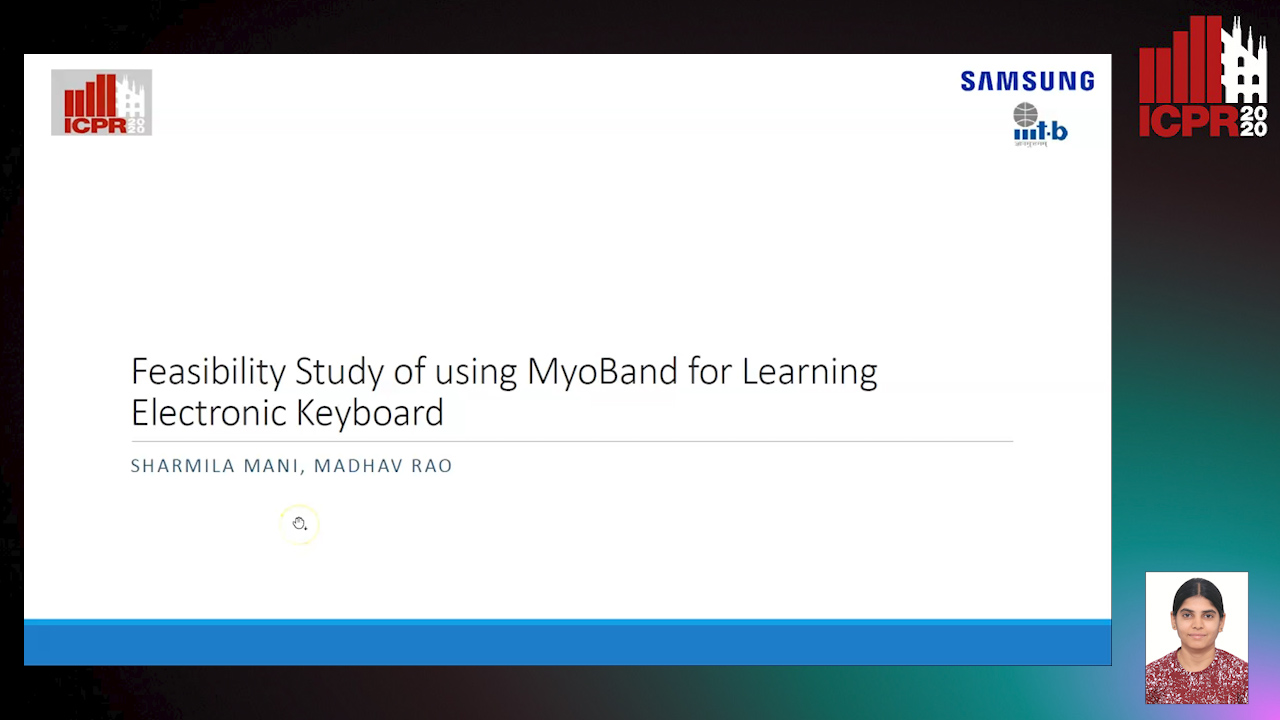Madhav Rao
Paper download is intended for registered attendees only, and is
subjected to the IEEE Copyright Policy. Any other use is strongly forbidden.
Papers from this author
Feasibility Study of Using MyoBand for Learning Electronic Keyboard

Auto-TLDR; Autonomous Finger-Based Music Instrument Learning using Electromyography Using MyoBand and Machine Learning
Abstract Slides Poster Similar
Learning musical instrument like piano or electronic keyboard on average takes a decade time. Currently, musical instrument learning requires continuous supervision from the tutor, and self learning to reach expert level is considered impossible. On the other side, it often becomes unrealistic to stay connected with the music tutor for a long time and many learners stop halfway. To address this specific issue, online distance learning platform is implemented for music learning system, yet it does not support self learning, remains tutor dependent, and is not a scalable approach. In addition, there is no way for these platforms to verify whether user pressed a key note with the intended finger, which is significant for learning finger based musical instruments. To overcome this, an autonomous system to evaluate and guide in the learning process by continuously tracking finger movements via a non-camera based solution is proposed. Finger press triggers the muscle movements which are detected at the surface of the forearm in the form of surface Electromyography (sEMG) signals. The paper proposes tracking of finger press on an electronic keyboard using MyoBand [1] wearable device that provided 8 channels of sEMG signals. A machine learning (ML) approach was considered with eleven time and frequency domain features of sEMG signals, to classify musical note played by the instrument on corresponding finger press. The feature set was further standardized using standard scaler approach, and vector dimensions were reduced by Linear Discriminant Analysis (LDA) method. The resulting reduced dimension data was applied on Random Forest (RF) classifier to report best classification accuracy for our application. For training the RF model, several trails of 10 seconds sEMG signals were collected using wearable MyoBand device. Experiments involved single finger press to render a note in the musical instrument, and multiple finger press to define chord sequence on an electronic musical keyboard. Further analysis was performed to maximize the classification accuracy over the number of trials and optimize the position of electrodes for successful identification of musical note played. The proposed method achieves a classification accuracy of 74.25% for 5 musical note played on an electronic keyboard instrument with 4 MyoBand electrodes, and an accuracy of 95.83% with one electrode for identifying between four musical events including two major chords and two musical notes